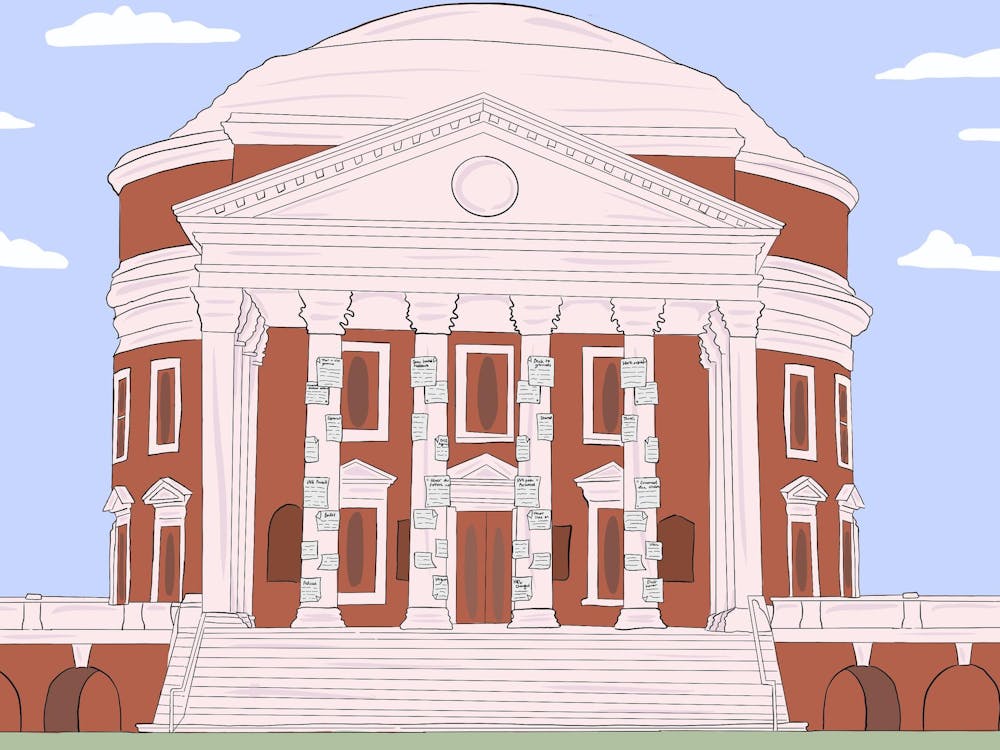This week the University welcomed its largest class of first-years in history, a trend that has remained rather consistent over the last 25 years. While it is exciting to know that there will be more Wahoos on Grounds than ever before, red flags rise as the University moves farther away from its reputation as a medium-sized school. This reputation, which implies that the University has the perks of both a larger and smaller school, may be tarnished if there aren’t future limits on enrollment.
The University has been relatively successful thus far at maintaining its classification as a “medium-sized” school. The advantages of such include having the research opportunities, class selections and distinguished faculty that come with a larger school while also maintaining some of the intimacy that comes with a smaller school. Intimacy applies to many different components of the University experience. Smaller colleges will have professors instead of teaching assistants instructing almost all their classes, smaller class sizes for more interactions with professors, and a stronger sense of community.
Medium-sized schools find the balance between large and small. It is through this balance that the University maintains some of its more significant features, such as the Community of Trust perpetuated by the Honor Code. In the past decade, the University has seen significant growth, reaching nearly 22,000 undergraduate and graduate students last year. It is not unreasonable to assume that our enrollment could rival that of Virginia Tech’s 29,000 in the coming years. Such a size would likely result in a loss of a sense of community.
The Honor Code will likely become less effective as the number of students at the University rises. Not only does a large school make it more difficult to form interpersonal connections with people, but also it makes it tougher to educate students about how the Honor Code works. Such a system could not function at a larger school like Michigan, in which each student connects with only a tiny fraction of the nearly 44,000 students.
Transitioning to a larger school has other disadvantages. As of now, in the Politics department, every class below the 5000-level has a waitlist in Comparative Politics and International Relations, not to mention every class below the 4000 level having a waitlist for American Politics and Political Thought. Other popular departments such as Media Studies and Economics have only one or two classes open for enrollment. As it is, this is a dilemma for upperclassmen and other students who have declared majors in these departments who cannot enroll in classes they may need to graduate.
This situation would only worsen with a larger student body. If the University does not have the resources for the number of classes to keep up with the increases in students, then the University may encounter some serious class enrollment problems. More incoming first-years, athletes, Jefferson Scholars and Echols Scholars with better enrollment times would take even more spots away from other students, causing classes in other departments to face similar waitlist issues. There will simply be more students in certain subjects than the departments can accomodate.
One possible counterargument is that the number of applications is rising at such a high rate that enrollment is bound to increase. Yet, while application numbers rose by 7,000 applicants from 2003 to 2010, first year enrollment only rose by 165 students. This change in enrollment is almost equal to the rise in enrollment of 150 students from 2013 to 2014. The period from 2003 to 2010 in which enrollment was regulated proves that it is possible for the University to maintain a steady number of students. Thus, the University can remain at its current, optimal size.
Four years ago, the Board of Visitors approved a plan to increase enrollment an additional 1,500 students over the next five years. In an interview, President Sullivan explained that these changes had two underlying political catalyzers. Firstly, the governor wished to “increase the number of Virginians with baccalaureate degrees,” and secondly, Northern Virginia legislators wanted “more places for their constituents at U.Va.” While the Board of Visitors always act in the best interests of the University, it is crucial that another plan such as this is not passed.
Both of these political pressures were very noble pursuits to better educate the Virginian youth. Nevertheless, if first-year classes continue to climb in sizes over 4,000 and beyond, such increases will detract from the exclusive feeling of being a University student. This University prides itself in its uniqueness, both in tradition and experience, and remaining this current size will be crucial in the coming years to maintain a reputation as a school that truly can bridge the gap between small and large, allowing for easier class access and a more interpersonal community.
Jared Fogel is an Opinion Columnist for The Cavalier Daily. He can be reached at j.fogel@cavalierdaily.com.






